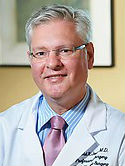| Abstract: |
Background: The aim of this study was to assess the difference (Δ) in neutrophil to lymphocyte ratio (NLR), before and after chemoradiotherapy, as a predictor of treatment response and a prognostic factor for recurrence and disease-free survival in patients with esophageal squamous cell cancer treated with chemoradiotherapy with or without surgery. Methods: Patients with locally advanced esophageal squamous cell cancer treated with chemoradiation with and without surgery who had a complete blood count before and after chemoradiotherapy were included. Pretreatment and posttreatment NLR were calculated by dividing the absolute neutrophil count by the absolute lymphocyte count. The ΔNLR was defined as posttreatment minus pretreatment NLR. Characteristics were evaluated for association with ΔNLR using the Wilcoxon signed rank test or the Kruskal-Wallis test. Risk of recurrence and disease-free survival were evaluated using Gray's and the log rank tests, respectively. Results: We included 217 patients. Of them, 133 patients (61.3%) received only chemoradiotherapy and 84 (38.7%) underwent surgery after chemoradiotherapy. Among the surgical patients, 43% with pathologic complete response showed significantly lower median ΔNLR than patients with residual disease (−0.03 versus 1.04, p = 0.004). High ΔNLR was a negative predictor of treatment response (odds ratio 0.77, 95% confidence interval: 0.62 to 0.9, p = 0.004). A significant association between high ΔNLR and increased risk of recurrence was also identified. Conclusions: The ΔNLR was inversely related to pathologic complete response and associated with risk of recurrence. This simple test, in concert with other clinical tools, can help identify patients with pathologic complete response. © 2018 The Society of Thoracic Surgeons |















